According to CSSeletronics.
What is the SDO service?
The SDO service allows a CANopen node to read/edit values of another node's object dictionary over the CAN network.
As mentioned under 'communication models', the CANopen SDO services utilize a "client/server" behavior.
Specifically, an SDO "client" initiates the communication with one dedicated SDO "server".
The purpose can be to update an OD entry (called an "SDO download") or read an entry ("SDO upload").
In simple master/slave networks, the node with NMT master functionality acts as the client for all NMT slave nodes reading or writing to their ODs.
https://www.csselectronics.com/pages/canopen-tutorial-simple-intro#sdo-service-data-object
Why are NMT masters acting as SDO clients and not SDO masters in CANopen?
